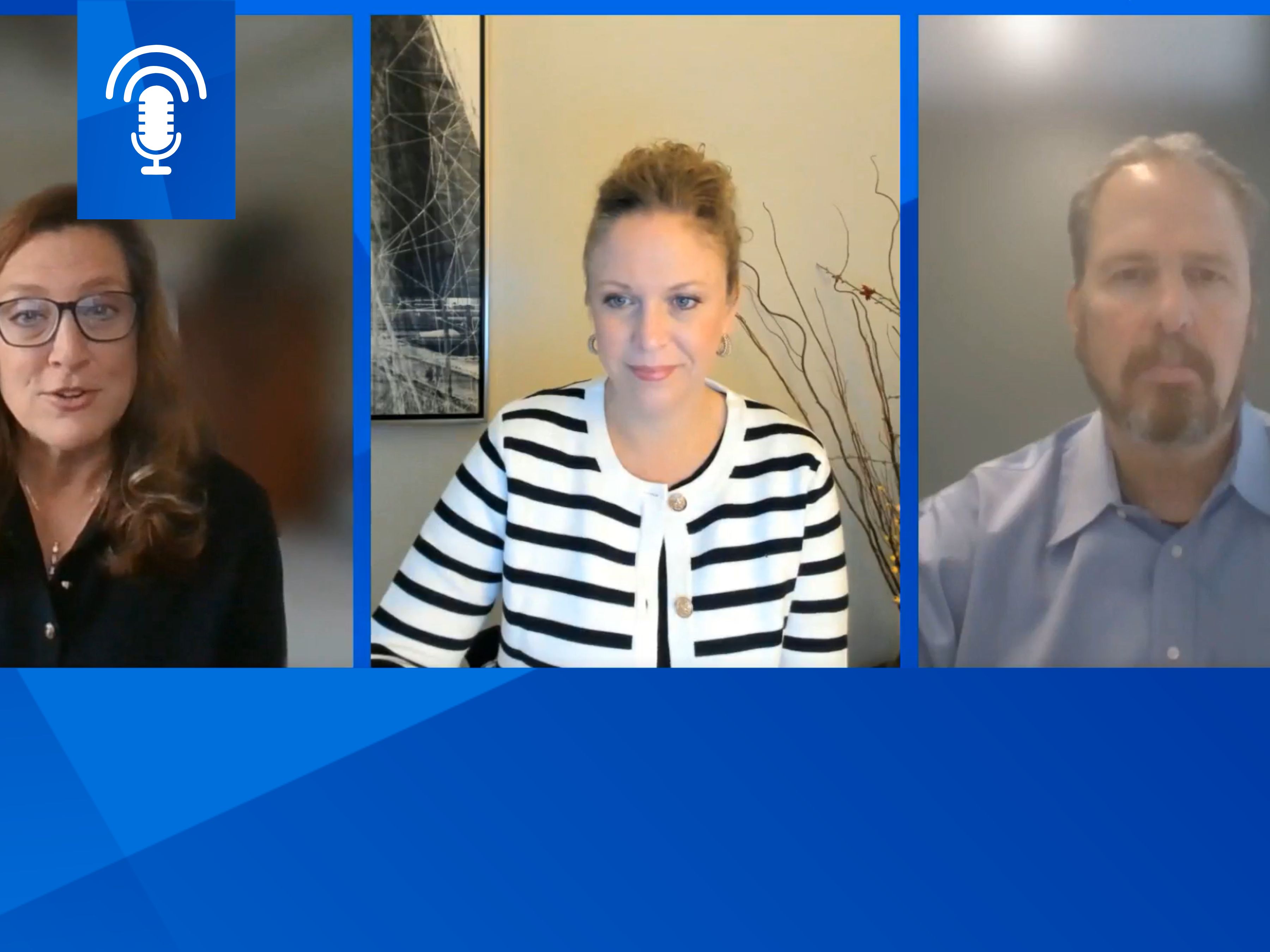Transform retail operations with Zebra’s retail technology solutions, featuring hardware and software for improving inventory management and empowering teams.
Streamline operations with Zebra’s healthcare technology solutions, featuring hardware and software to improve staff collaboration and optimise workflows.
Enhance processes with Zebra’s manufacturing technology solutions, featuring hardware and software for automation, data analysis, and factory connectivity.
Zebra’s transportation and logistics technology solutions feature hardware and software for enhancing route planning, visibility, and automating processes.
Technology is a key enabler in helping the Public Sector provide their frontline and back office workers automate business process and assets with a digital voice.
Zebra's hospitality technology solutions equip your hotel and restaurant staff to deliver superior customer and guest service through inventory tracking and more.
Zebra's market-leading solutions and products improve customer satisfaction with a lower cost per interaction by keeping service representatives connected with colleagues, customers, management and the tools they use to satisfy customers across the supply chain.
Empower your field workers with purpose-driven mobile technology solutions to help them capture and share critical data in any environment.
Zebra's range of mobile computers equip your workforce with the devices they need from handhelds and tablets to wearables and vehicle-mounted computers.
Zebra's desktop, mobile, industrial, and portable printers for barcode labels, receipts, RFID tags and cards give you smarter ways to track and manage assets.
Zebra's 1D and 2D corded and cordless barcode scanners anticipate any scanning challenge in a variety of environments, whether retail, healthcare, T&L or manufacturing.
Zebra's extensive range of RAIN RFID readers, antennas, and printers give you consistent and accurate tracking.
Choose Zebra's reliable barcode, RFID and card supplies carefully selected to ensure high performance, print quality, durability and readability.
Zebra's location technologies provide real-time tracking for your organisation to better manage and optimise your critical assets and create more efficient workflows.
Zebra's rugged tablets and 2-in-1 laptops are thin and lightweight, yet rugged to work wherever you do on familiar and easy-to-use Windows or Android OS.
With Zebra's family of fixed industrial scanners and machine vision technologies, you can tailor your solutions to your environment and applications.
Zebra’s line of kiosks can meet any self-service or digital signage need, from checking prices and stock on an in-aisle store kiosk to fully-featured kiosks that can be deployed on the wall, counter, desktop or floor in a retail store, hotel, airport check-in gate, physician’s office, local government office and more.
Discover Zebra’s range of accessories from chargers, communication cables to cases to help you customise your mobile device for optimal efficiency.
Zebra's environmental sensors monitor temperature-sensitive products, offering data insights on environmental conditions across industry applications.
Adapt to market shifts, enhance worker productivity and secure long-term growth with AMRs. Deploy, redeploy and optimize autonomous mobile robots with ease.
Enhance frontline operations with Zebra’s AI software solutions, which optimize workflows, streamline processes, and simplify tasks for improved business outcomes.
Zebra Workcloud, enterprise software solutions boost efficiency, cut costs, improve inventory management, simplify communication and optimize resources.
Keep labour costs low, your talent happy and your organisation compliant. Create an agile operation that can navigate unexpected schedule changes and customer demand to drive sales, satisfy customers and improve your bottom line.
Drive successful enterprise collaboration with prioritized task notifications and improved communication capabilities for easier team collaboration.
Get full visibility of your inventory and automatically pinpoint leaks across all channels.
Reduce uncertainty when you anticipate market volatility. Predict, plan and stay agile to align inventory with shifting demand.
Drive down costs while driving up employee, security, and network performance with software designed to enhance Zebra's wireless infrastructure and mobile solutions.
Explore Zebra’s printer software to integrate, manage and monitor printers easily, maximising IT resources and minimising down time.
Make the most of every stage of your scanning journey from deployment to optimisation. Zebra's barcode scanner software lets you keep devices current and adapt them to your business needs for a stronger ROI across the full lifecycle.
RFID development, demonstration and production software and utilities help you build and manage your RFID deployments more efficiently.
RFID development, demonstration and production software and utilities help you build and manage your RFID deployments more efficiently.
Zebra DNA is the industry’s broadest suite of enterprise software that delivers an ideal experience for all during the entire lifetime of every Zebra device.
Advance your digital transformation and execute your strategic plans with the help of the right location and tracking technology.
Boost warehouse and manufacturing operations with Symmetry, an AMR software for fleet management of Autonomous Mobile Robots and streamlined automation workflows.
The Zebra Aurora suite of machine vision software enables users to solve their track-and-trace, vision inspection and industrial automation needs.
Zebra Aurora Focus brings a new level of simplicity to controlling enterprise-wide manufacturing and logistics automation solutions. With this powerful interface, it’s easy to set up, deploy and run Zebra’s Fixed Industrial Scanners and Machine Vision Smart Cameras, eliminating the need for different tools and reducing training and deployment time.
Aurora Imaging Library™, formerly Matrox Imaging Library, machine-vision software development kit (SDK) has a deep collection of tools for image capture, processing, analysis, annotation, display, and archiving. Code-level customisation starts here.
Aurora Design Assistant™, formerly Matrox Design Assistant, integrated development environment (IDE) is a flowchart-based platform for building machine vision applications, with templates to speed up development and bring solutions online quicker.
Designed for experienced programmers proficient in vision applications, Aurora Vision Library provides the same sophisticated functionality as our Aurora Vision Studio software but presented in programming language.
Aurora Vision Studio, an image processing software for machine & computer vision engineers, allows quick creation, integration & monitoring of powerful OEM vision applications.
Adding innovative tech is critical to your success, but it can be complex and disruptive. Professional Services help you accelerate adoption, and maximise productivity without affecting your workflows, business processes and finances.
Zebra's Managed Service delivers worry-free device management to ensure ultimate uptime for your Zebra Mobile Computers and Printers via dedicated experts.
Find ways you can contact Zebra Technologies’ Support, including Email and Chat, ask a technical question or initiate a Repair Request.
Zebra's Circular Economy Program helps you manage today’s challenges and plan for tomorrow with smart solutions that are good for your budget and the environment.

Are You a Hospital Leader Who’s Wondering What More You Can Do Right Now to Make Life (and Work) Better for People?
If you’re not sure what part of your operation needs “transformation” or how big that transformation really needs to be, this is what others are suggesting.
It was cold. The sun was bright in the sky, and there was an almost magical mist surrounding the trees. The smoking haze and sun distorts the colours of vegetation. I could see pinks amongst the green foliage and dark wood. The ground was hard and frosty, so I treaded carefully to avoid trips and falls. My golden labrador puppy chased my elderly mutt without a care in the world, clumsily tripping over in the ice and rolling a few times in the dirt, then bouncing back up with doggy joy.
Amidst this scene of beauty, my mind was racing. I had stepped outside for some fresh air having listened in to my local hospital board meeting. A place I hold close in my heart. I've volunteered there, been treated for broken bones, given birth, visited friends and family. The people who keep this hospital open and available to people like me really mean a lot to me. It was tough to hear they were under pressure.
Especially winter pressures.
The frigid conditions that created the stunning midwinter landscape around me were part of the challenge. Cold brings forth an army of nasties. Flu, covid, norovirus. And it leads to accidental injuries, particularly with the frail. Icy surfaces mean extra slips, trips and falls. The elderly patients I chat to volunteering are often bright as a button mentally, but trapped in their bodies after falls that can take months to recover from. Hospitals are creaking under the pressure, and some are calling 'critical incident' status.
Though, these pressures seem to be extending year-round these days, don’t they?
What can be done to help people recover faster? Or prevent the care providers from getting so burned out in the process that they need assistance recovering?
Efficiency versus Safety
I replayed some of the conversations I'd heard in the board meeting over in my mind. The two themes that resonated hardest were efficiency and safety. The people working in this hospital, like others around the globe, are faced with a difficult challenge every day: meet their financial goals in a way that does not impact the safety of patients.
Balancing the budget is complex with savings needed across multiple departments. There are no quick fixes, as they stressed (and you know.) Staff wages are often the biggest cost centre with expensive agency staff taking a toll, they noted. Cutting them out might seem an easy win, but recruiting and retaining clinicians is a challenge, someone reminds the group. Too much pressure leads to burn out. And staff are impacted by the winter bugs too.
As pointed out: staff absence rates are just over 5% in the UK, and there is an 8% staff turnover rate to deal with.
Put quite simply: understaffing risks patient safety, and agencies help plug holes. Any reductions must be managed delicately.
With a level-set on the current state of friction complete, the conversation turns to the future.
Providing safe, timely, sustainable care whilst meeting capacity challenges are goals that inevitably fall into conflict. Cutting staff or reducing services frees resource but at a cost to patient care.
It’s a tightrope, and the hospital leaders on this call remind us all they have so much to focus on. The integrated care board (ICB) overseeing healthcare planning for my area foresees a growth in ‘over 70s’ of 20.8% by 2036, notching up the pressure cooker.
"While the challenge is substantial, success is dependent on unified effort and commitment from across the system".
What does that unified effort look like? Is it something that you could join or replicate?
As I delved into the ICB's medium term plan, two critical points stood out. Both are items that have filtered through from central policy and are themes I see all over the world:
1. Unlocking productivity using technology
2. Digital, and community, transformation (i.e., shifting care closer to home)
I was eager to learn more about community transformation plans, especially since being driven from the inside out (hospital -> home health) rather than outside in (home health -> hospital).
I’ve seen plenty of evidence demonstrating that prolonged stays in hospitals do not lead to better health outcomes. I know patients prefer to be treated in their own homes – I’m one of them – and hospitals need to reduce inpatient episodes. So, I’m not surprised these combined forces are fuelling the movement of care out of hospitals into the community.
To achieve community transformation, though, changes are needed. There is a requirement to provide more proactive and preventative care in people’s homes and communities. Technology can support this transformation. It seems your peers – other hospital leaders – are accepting this more each day. Some are acting quite swiftly to lay the foundation for this transformation.
The leaders of Calderdale & Huddersfield Foundation NHS Trust are ahead of the curve. They have armed the hospital’s community team with purpose-built mobile computers that make it easy to carry out their work in the field without feeling like they’re outside the four walls. Devices are equipped with a communication app so secure it would pass most (if not all) government standards. This makes it possible for the community team to share sensitive medical information with clinicians back at base.
This team works with the most vulnerable members of our communities, which comes with risk. Fortunately, if someone were to feel unsafe or an emergency scenario occurs, a quick push of the duress button would trigger a call for help, with staff locations automatically reported. No one would have to say or type a word. Just discreetly push a button. This capability helps mitigate against lone worker risks. It also provides comfort to the care givers. (Both inside and outside the hospital, as many around the world have confirmed.)
The devices used by the Calderdale team act as a technological Swiss army knife. Care team members can photograph wounds to check healing, or scan medication barcodes and add them to patient records, eliminating errors. They are satisfied with their experience – and effective operating – outside the hospital, both of which help enhance productivity in the long term and make it easier to scale service levels as more patients start needing care at home.
How else technology is helping hospital leaders make positive changes right now
The ability to make healthcare a more enjoyable profession is by no means limited to community transformation initiatives such as the one I just described. Cash efficiency, and cash releasing, opportunities that deliver better outcomes and experiences for staff and patients remain abundant. Harnessed correctly, they have the power to help you return your healthcare system to a better sense of financial balance.
The ever evolving 'Lego box' of hardware and software can be put together in a vast array of combinations to release value in hospital systems. Some people I know at UK Trusts have been leaning into RFID to release value. These solutions let clinicians sense where assets are, how they are being used and enable analysis of data in real time and empower workers to act.
People like Rachael Ellis and Sarah Atkins at Hull University Teaching Hospitals helped implement a hospital-wide RFID solution to better track and trace critical medical equipment across clinical spaces. The tracking system they came up with incorporated infrastructure, hardware and 72,000 RFID tagged assets. It has enabled time savings for clinical and non-clinical staff of "about 35 hours per employee per year.” That’s equal to 87,500 hours across 2,500 staff, or 2,187 weeks of time. Imagine how many more patients could be supported with that freed-up time – or how much cash flow could potentially improve.
Sarah spoke in detail about the impact of RFID on her job and patients’ experiences in this podcast chat. I also shared some of Rachael’s story here, if you’re interested.
Elsewhere in the UK, my Zebra colleagues worked with our partners at CSS to design and deliver first-of-their-kind RFID-enabled ambulances. Equipment and consumables are RFID tagged, and staff are alerted if items are left at a scene. Back-end records are updated as stock is utilised in real time, helping to ensure restocks can be prepared ahead of the ambulance’s arrival back at the hospital, reducing get-ready times.
After repeatedly hearing firsthand how pressures are mounting – and knowing you and other hospital leaders are doing all they can to alleviate tension – the key takeaway for me is that there is no longer time to ‘wait and see’ what others are doing.
There are plenty of people who have moved first. Plenty of people to talk to and learn from. Now it’s your time to make a move – into the community and toward technology system changes that enable your staff to properly care for patients in the hospital and homes without feeling alone or exhausted.
Now’s the time to remove the friction in everyday operations and create that optimal experience everyone’s been talking about since we clearly saw what didn’t work well during the pandemic. Now’s the time to feature ‘function’ over flash. Though, if a little flash (of a handheld RFID reader or high-quality mobile device camera) is needed for things to function better, and for people to feel better, then don’t hold back. People are counting on you to make them feel better.
Zebra Developer Blog
Zebra Developer Blog
Are you a Zebra Developer? Find more technical discussions on our Developer Portal blog.
Zebra Story Hub
Zebra Story Hub
Looking for more expert insights? Visit the Zebra Story Hub for more interviews, news, and industry trend analysis.
Search the Blog
Search the Blog
Use the below link to search all of our blog posts.
Most Recent
Legal Terms of Use Privacy Policy Supply Chain Transparency
ZEBRA and the stylized Zebra head are trademarks of Zebra Technologies Corp., registered in many jurisdictions worldwide. All other trademarks are the property of their respective owners. ©2025 Zebra Technologies Corp. and/or its affiliates.





